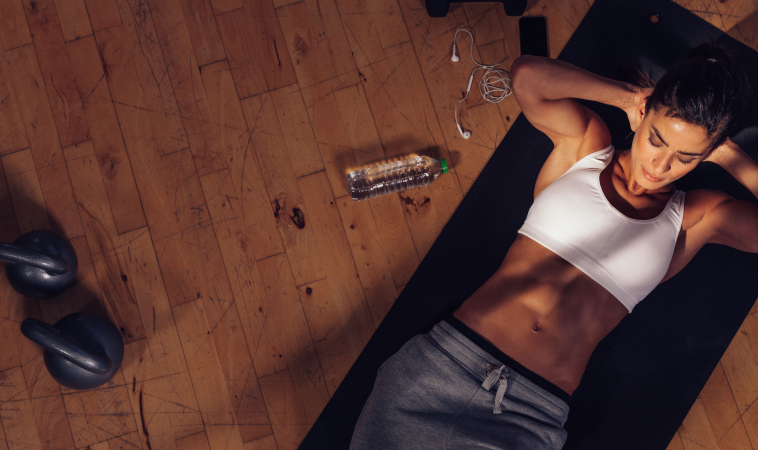We are all too familiar with the broken refrain that to lose weight we must eat less and exercise more. However, starvation portions and more time on the treadmill doesn’t work. This series examines several simple tweaks that help keep weight off. Read part one of this series on weight loss here.
Exercise Anywhere
The first shift on exercise is to understand that physical activity doesn’t have to mean time spent in a gym wearing sweaty spandex, which seems to be the mental image most of my patients conjure up when I ask them about exercise habits. Our culture seems to think that unless it’s Exercise with a capital E it doesn’t count, and that gets in the way of physical activity. Any time simply not spent stationary counts and the goal is to institutionalize as much that as possible.
Some of my favorite ways include:
- Riding a bike or walking to run errands or get to work.
- Really walk the dog, not just a stroll around the block.
- Socialize with walking dates. Join or create a weekly hiking group.
- Use a push mower if your lawn isn’t too big over a gas or electric powered one. Use a rake, not a leaf blower. Makes for a quieter neighborhood too.
All of the above are not new ideas, but take a moment to look at your own patterns and figure out what is keeping you from adding these in. Maybe you don’t have a comfortable pair of shoes for walking, a good bike for commuting, or are unsure which of your friends might be up for a walk. Maybe a bus can take you part way and you can bike the rest, or consider an electric bike even. Once you identify your obstacles you can find some solutions.
The goal is to normalize daily exercise. Nike’s slogan gets it right – just do it!
Interval Training
The second shift on exercise is to use interval training. Especially as we age the prospect of doing prolonged activity can be painful to contemplate. The good news is embracing high intensity interval training (HIIT) is not only better for weight loss, but kinder to your joints as well. The benefits also include a lowering of fasting blood glucose and hemoglobin A1c, two of our measures of metabolic syndrome and diabetes. The concept is simple: it’s better to have short bursts of activity than prolonged episodes.
Try adding the following ideas to your normal exercise routine:
- If you aren’t already doing strength training, or you are looking for a way to mix it up, add in a 7-minute workout. These are available as free app downloads and require no equipment beyond a chair. The workouts guide you through 30-second burst of simple activity like jumping jacks or push-ups alternating with 10-15 seconds of rest. I like to tell patients you don’t even need to change clothes because in only 7 minutes you don’t even get sweaty!
- Whatever cardiovascular activity you do (running, walking, swimming biking, etc.) add some bursts in. Go steady and slow-medium pace for 5 minutes then add a 30-60 second burst of very high speed. You get greater benefits doing this for, say, 20 minutes, rather than a steady plod on the treadmill for 40 minutes. Over time your overall speed and endurance will improve as well.
Small steps add up, especially ones that aren’t particularly burdensome to try. Tune in next month for the next installment in the series.
 Dr. Alethea Fleming, ND is a passionate advocate for naturopathic geriatric medicine. A 2007 Bastyr University graduate, she also earned a certificate in Gerontology from the University of Washington. Dr. Fleming is the owner and lead physician of the Vital Aging Clinic in Anacortes, Washington where she provides primary care to all adults as well as adjunctive geriatric care. Dr. Fleming is active in multiple community organizations as well as a member of WANP, AANP and OncANP. In her off hours, Dr. Fleming can be found hiking the beautiful trails of Fidalgo Island, spending time with her wonderful husband and son, or with her nose firmly in a good book.
Dr. Alethea Fleming, ND is a passionate advocate for naturopathic geriatric medicine. A 2007 Bastyr University graduate, she also earned a certificate in Gerontology from the University of Washington. Dr. Fleming is the owner and lead physician of the Vital Aging Clinic in Anacortes, Washington where she provides primary care to all adults as well as adjunctive geriatric care. Dr. Fleming is active in multiple community organizations as well as a member of WANP, AANP and OncANP. In her off hours, Dr. Fleming can be found hiking the beautiful trails of Fidalgo Island, spending time with her wonderful husband and son, or with her nose firmly in a good book.

















